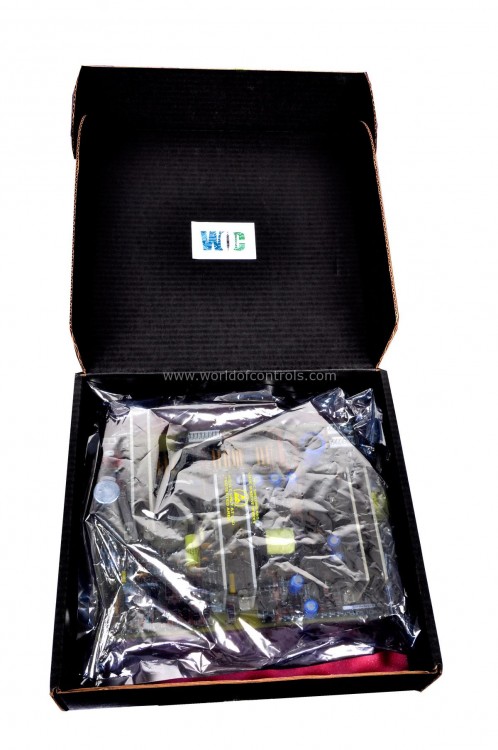
World Of Controls understands the criticality of your requirement and works towards reducing the lead time as much as possible.
DS3820BFEE - Cell Stack Assembly is available in stock which ships the same day.
DS3820BFEE - Cell Stack Assembly comes in UNUSED as well as REBUILT condition.
To avail our best deals for DS3820BFEE - Cell Stack Assembly, contact us and we will get back to you within 24 hours.
Part Number: DS3820BFEE
Manufacturer: General Electric
Series: Mark IV
Product type: Cell Stack Assembly
Availability: In Stock
Country of Manufacture: United States (USA)
DS3820BFEE is a Cell Stack Assembly designed and developed by GE. It is part of Mark IV control system. The Mark IV control system represents a significant advancement in control systems, emphasizing improved availability, diagnostics, and modularity. Its architecture distributes control functions among four specialized microcomputers to ensure reliability and operational continuity. Three of these microcomputers (designated as R, S, and T) perform identical control functions, while the fourth (C) focuses on communication and coordination.
The system incorporates powerful on-line diagnostic capabilities, which can precisely identify faulty sections down to the replaceable component level. This precision minimizes downtime, as panel repairs can be conducted with the gas turbine still operational. The projected mean time to repair (MTTR) is approximately three to four hours, a significant improvement in industrial control maintenance efficiency.
The Mark IV design incorporates distributed sensor architecture to ensure redundancy and enhance reliability. Critical sensors, such as the thirteen exhaust thermocouples, are strategically distributed across the R, S, and T sections. Each section independently assesses turbine conditions:
These readings are processed by the C section, which calculates a median value and communicates it back to R, S, and T for turbine control. Under normal circumstances, the turbine operates based on this median value, ensuring consistent and accurate control. If a failure occurs, each section (R, S, or T) can independently assess the data and adjust fuel limits accordingly, maintaining operational safety and efficiency.
To ensure reliability in critical outputs, the system employs a voting mechanism across the R, S, and T sections. A typical 2-out-of-3 voting protocol is used to confirm actions. For high-stakes commands, such as closing the stop valve, three independent relays are configured to vote on the output, adding an additional layer of redundancy and safety.
The Mark IV system was engineered with specific design restrictions, including limits on manufacturing costs and panel size. Despite these constraints, it achieves robust performance and availability, underscoring its efficiency and adaptability in industrial environments.
WOC is happy to assist you with any of your GE requirements. Please contact us by phone or email for pricing and availability on any parts and repairs.
What is DS3820BFEE?
It is a Cell Stack Assembly designed and developed by GE.
How does the Mark IV improve system availability?
The system distributes control functions across four microcomputers, three identical control sections (R, S, T), and one dedicated to communication (C). This design enables continuous operation even during component failures, with online diagnostics pinpointing faults for quick repairs.
What redundancy mechanisms are in place for critical outputs?
The system uses a 2-out-of-3 voting protocol for outputs, ensuring reliability. For crucial commands, such as closing the stop valve, three independent relays are connected to provide fail-safe operation.